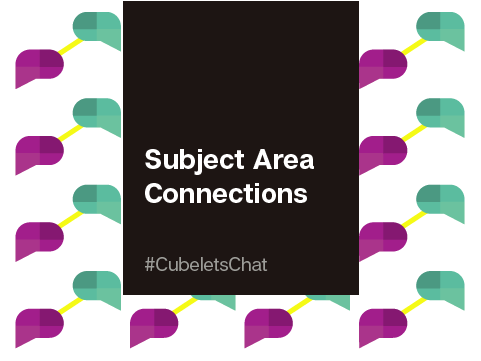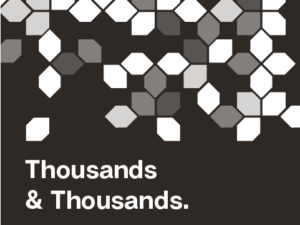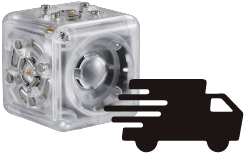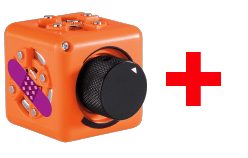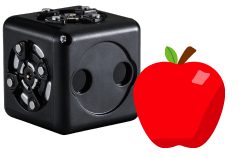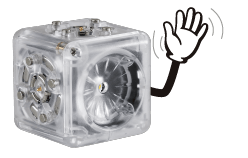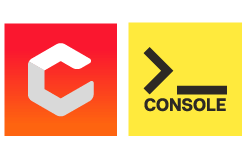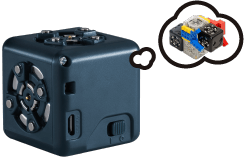Frequently, Cubelets are used to supplement other subjects like math, science, ELA, or art, instead of being isolated to a computer science setting. If this describes your classroom, you are not alone — and we have resources to help you! All of our content-specific lesson ideas are hosted on the Hub in the Grab Bag. These lesson ideas are just that, ideas, not full lesson plans.
I chose not to write full lesson plans for a very important reason (and it’s not because I don’t love you!). The fact is all teachers approach their content areas differently. Some focus on workshop models and others prefer guided release lessons. Likewise, we all create content-focused units in unique ways. Some teachers structure units as research projects, others focus on guided investigations, and yet others prefer to focus on PBLs that connect directly to their local community.
If I were to write a full lesson plan in the Grab Bag (and there are a couple scattered throughout), the overwhelming majority of you would need to sort through pages and pages to gather the nuggets of information that suit your classroom structures. To save you the trouble, I’ve outlined a high-level narrative of how a lesson might look and left the options open for how you’d like to bring the learning to life in the context of your broader unit.
As you scan the options below, remember we are constantly updating the Grab Bag with new ideas and we always appreciate teachers sharing what’s working in their classroom. If you’d like to contribute to our Grab Bag (this is part of many teacher evaluation rubrics: participating in a community beyond your grade, school, or district), simply email your ideas to emily.eissenberg@modrobotics.com or tweet @modrobotics using the hashtag #CubeletsChat. If we share or post your ideas, we will cite you and link back to any other resources you may have available. We love collaborating with teacher-bloggers and are happy to link back to school-specific or district-specific initiative pages. Because Modular Robotics is a small company, we have a lot of flexibility about how we can support you when you choose to share your hard work!
Here are some highlights from our Grab Bag:
Science
If you most-easily envision Cubelets connecting to your science curriculum, here are some of our favorite lessons that can flex to become larger parts of a unit or a single station within your science workshop:
Animal Adaptations: Students design robots to adapt to a variety of environments. You might have students design diurnal versus nocturnal animals, or animals that live in hot climates versus temperate or cold climates.
Extreme Weather: Students design robots that can help out during cases of extreme weather. These robots could protect people or animals during a storm, or provide a service before or after a storm. This is an authentic application for many professional robotics labs today!
Waves: Students can use Cubelets as a tool to model their understanding of waves. They might make a spinning table to practice drawing and measuring frequency and amplitude of waves, or they might program their robot to mimic waves with different attributes.
ELA
If English Language Arts is your wheel-house, here are a couple of our favorite ELA connections:
Character Mimic: Students design robots that mimic a character or two from a story they are reading. This could include physical attributes, but could also expand to include character motivations or relationships. What does this character run toward? What do they run away from? What makes this character “light up”?
Storytelling: Students invent a robot or two and then write a story based on how the robots behave. Depending on your narrative-writing standards, you might focus on beginning-middle-end or you may expand to include a variety of text structures like cause-and-effect or problem-solution.
Practicing Relative Language: We frequently hear from teachers who support English Language Learners using Cubelets. They regularly report students to become more engaged and even more talkative when they are investigating Cubelets. Relative Language is a natural example of how fun Cubelets can be while students are practicing words and phrases like above, below, behind, next to, or around the corner. Consider our Activity Card called Blind Directions for another example of how this could look in your classroom.
Math
Some teachers look at Cubelets and immediately make connections to their math curriculum. Especially once you understand how data flows through a Cubelets construction, these connections can be easy to make. Here are a couple of the connections we most often hear from teachers:
Averages: Cubelets communicate using a weighted average which is a great way to extend students’ understanding of averages. You might also add a Minimum, Maximum, or Threshold Cubelet to your collection to push your students’ explanations of averages to new levels. If you don’t have the budget for a new Cubelet, try using the Cubelets apps to Personality Swap any of your current THINK Cubelets to behave like a Min, Max, or Threshold (Knob Cubelet Personality)!
Measurement: Students measure how sensitive various SENSE Cubelets are. How close does an object need to be for a Distance Cubelet to notice? How close is “too close” for a Distance Cubelet? How big does the change in Temperature need to be for the Temperature Cubelet? Does anyone know how to measure lumens for the Brightness Cubelet?
Rates & Proportions: Building off of the measurement idea, students can create proportions comparing the environmental factors to the data being passed within a robot construction, or students can derive rates from a variety of racing robots.
Beginning Fractions: Investigating fractions can be as simple as demonstrating how many SENSE, THINK, or ACT Cubelets are in a given robot construction. Another way to address fractions, however, is to use the Bar Graph Cubelet to visualize fractions with a denominator of 10 or the Cubelets Console to visualize fractions with a denominator of 255 or 100.
PBL
Unlike the rest of the Grab Bag, our PBL includes a full month’s worth of resources to guide your students through an introductory PBL. We’ll even partner with you as coaches for your student groups and evaluators providing feedback. If you are introducing your students to Cubelets, or are interested in a PBL that can lay the groundwork for creating videos and other informational resources, check out our Cubelets Video PBL and email our Educational Designer (emily.eissenberg@modrobotics.com) when you’re ready to begin planning your PBL!
